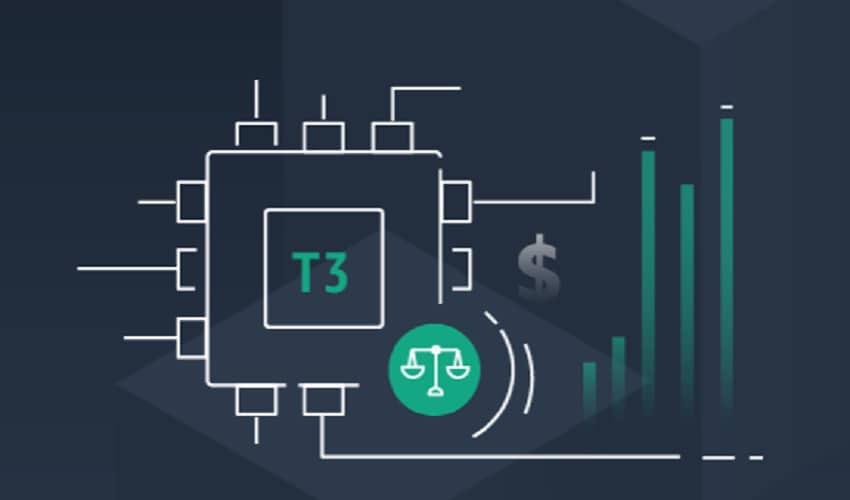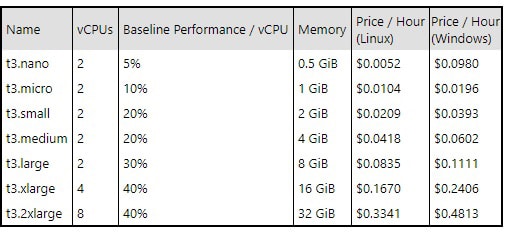
On August 21st Amazon Web Services (AWS), announced the availability of T3 instances; the next generation of burstable general-purpose instances for Amazon Elastic Compute Cloud (Amazon EC2). The new T3 services are generally cheaper per hour than T2 and are designed for applications with variable CPU usage that experience occasional spikes in demand.
T3 instances enable customers' applications to burst seamlessly to meet temporary traffic peaks and then scale back down to operate at typical traffic levels. T3 instances feature Intel Xeon Scalable processors and support up to 5Gbps in peak network bandwidth. The new T3 instances will have unlimited burst capability enabled by default. This is a change from T2 which defaulted to disabled.
T3 instances are based on the AWS Nitro System, a combination of purpose-built hardware and software infrastructure that powers Amazon EC2 instances. T3 instances can be launched via the AWS Management Console, Amazon EC2 Command Line Interface, SDKs, as well as third-party libraries. In addition to CPU bursting, T3 instances support network and EBS bursting, giving you access to additional throughput when you need it. Network traffic can burst to 5Gbps for all instance sizes; EBS bursting ranges from 1.5Gbps to 2.05Gbps depending on the size of the instance, with corresponding bursts for EBS IOPS. Like all of AWS's most recent instance types, the T3 instances are HVM only. They must be launched within a Virtual Private Cloud (VPC) using an AMI that includes the Elastic Network Adapter (ENA) driver.
Amazon is recommending that customers that run on M4 or M5 instances but don’t need sustained compute power consider moving them to T3 instances. You can host the workloads at relatively low cost while still having access to sustainable high performance when needed (unlimited bursting is enabled by default, making these instances even easier to use than their predecessors). However, caveat emptor, if the instance runs at higher CPU utilization for a prolonged period, there will be an additional charge of $0.05 per vCPU-hour. Interestingly, Amazon is also offering credits for underutilizing their instances. AWS full pricing can be found on their website, but the below chart is a reasonable attempt at summarizing the entire range of pricing and service permutations they offer. Baseline Performance indicates the percentage of a single hyperthread’s processing power that is allocated to the instance.
Availability
T3 instances are available in US East (Ohio, N. Virginia), US West (N. California, Oregon) Europe (Ireland, London, and Frankfurt), South America (Sao Paulo), Canada (Central), and Asia Pacific (Tokyo, Singapore, and Sydney) AWS Regions, and can be purchased as On-Demand, Reserved, or Spot Instances.
Sign up for the StorageReview newsletter


